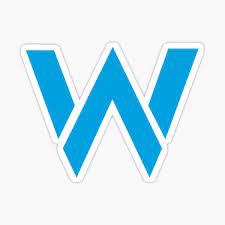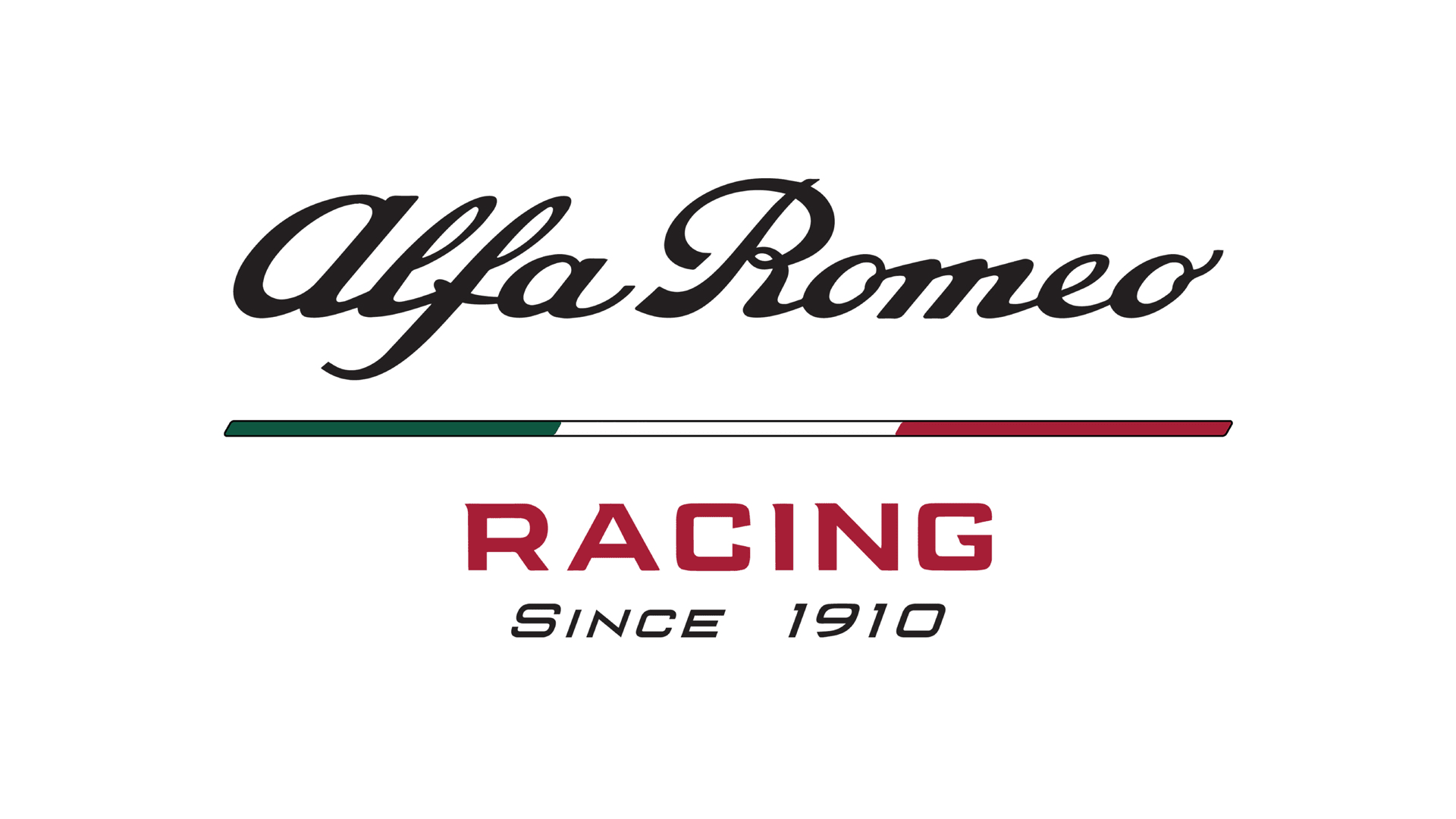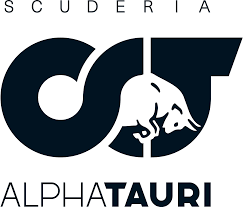Picture a Formula One driver: ripped abs, sculpted arms, a physique honed for peak performance. But are they all built the same and is the average f1 driver height and weight static? Surprisingly, no! While some drivers fit the stereotypical image, others challenge it with more average builds. In fact, the average f1 driver height and weight has been steadily rising, influenced by both changing regulations and the demands of the sport.
Gone are the days where being the lightest driver was the ultimate goal. Heavier cars and the need for more driver endurance and strength have shifted the equation. So, if you thought a featherweight frame was essential for F1 success, think again!
This article dives into the surprising truth about average F1 driver weight and its impact on the sport. Spoiler alert: while physique plays a role, it’s far from the whole story. Legends like Lewis Hamilton, Michael Schumacher, and Ayrton Senna prove that skill, experience, and the car itself hold far greater weight in determining F1 champions.
From Featherweight Racers to Balanced Beasts: A Look at F1’s Weight Regulation Evolution
Since the roaring debut of Formula One, weight has played a crucial role in the dance between speed and safety. In the early days, drivers were like lean jockeys, with the combined weight of car and driver needing to reach a minimum. This created an “advantage of lightness,” allowing teams to add ballast to lighter drivers and optimize car performance.
However, the 1980s saw a shift towards safety concerns. Specific weight limits for the driver-car combo were introduced, ensuring cars weren’t dangerously lightweight. The initial 580kg limit gradually climbed to 642kg in 2014, reflecting advancements in safety technology and changing car designs.
But this wasn’t just about safety
- Driver safety improved: Stricter weight requirements demanded stronger, heavier chassis and components, providing better protection for drivers in accidents.
- Equalizing the playing field: Removing the “lightweight advantage” forced teams to focus on car design and strategy rather than driver weight manipulation.
- Opening the door for diverse physiques: Taller, heavier drivers who might have been excluded in the past now had a fair shot at competing.
This evolution highlights the constant balancing act in F1: pushing the boundaries of speed while ensuring driver safety. Today’s regulations reflect this balance, with a minimum weight of 795kg (including the driver) for the 2023 season.
While individual driver weight doesn’t play the same role as it used to, it still influences various aspects like car setup and driving style.
From Featherweight Racers to Balanced Beasts: The Evolution of F1 Car Weight
In the high-octane world of Formula One, every gram counts. But how has the weight of F1 cars changed over time? This infographic explores the fascinating journey of F1 car weight regulations, from the early days of lightweight racers to the modern era of balanced beasts.
The Early Days: A Focus on Speed
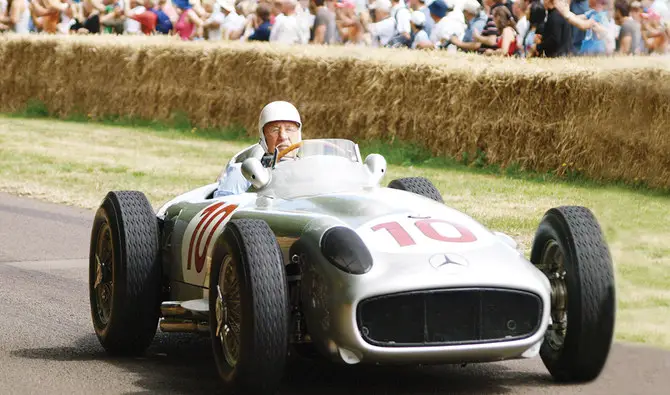
- No specific weight regulations for drivers
- Combined weight of car and driver had to meet a minimum
- Lighter drivers offered an advantage
- Teams added ballast to optimize car performance
In the early days of F1, there were no specific weight regulations for drivers. The total weight of the car and driver just had to meet a certain minimum. This meant that drivers who were lightweight had an advantage, as teams could add more ballast to the car to meet the minimum weight requirement and optimize car performance for speed.
The 1980s: Safety Takes Center Stage

- Specific weight limits introduced for driver and car combined
- Minimum weight set at 580kg in 1984
- Gradually increased to 642kg in 2014
- Driver safety became a top priority
The 1980s saw a shift towards safety concerns. Specific weight limits for the driver-car combo were introduced, ensuring that cars weren’t dangerously lightweight and more likely to be compromised in accidents. The initial 580kg limit gradually climbed to 642kg in 2014, reflecting advancements in safety technology and changing car designs.
More Than Just Safety: The Impact of Weight Regulations

- Improved driver safety: Stronger, heavier chassis and components provided better protection
- Leveled playing field: Removed “lightweight advantage” and forced focus on car design and strategy
- Opened doors for diverse physiques: Taller, heavier drivers could now compete
The evolution of weight regulations wasn’t just about safety. It also:
- Improved driver safety: Stricter weight requirements demanded stronger, heavier chassis and components, providing better protection for drivers in accidents.
- Leveled the playing field: Removing the “lightweight advantage” forced teams to focus on car design and strategy rather than driver weight manipulation, creating a more equitable competition.
- Opened the door for diverse physiques: Taller, heavier drivers who might have been excluded in the past now had a fair shot at competing, increasing the diversity of the driver pool.
The Modern Era: Balancing Speed and Safety

- Minimum weight of 795kg (including driver) for the 2023 season
- Individual driver weight still influences car setup and driving style
- Recent trend of weight increase raises questions about performance and future regulations
Today’s F1 regulations reflect a constant balancing act between pushing the boundaries of speed and ensuring driver safety. The minimum weight for the 2023 season is 795kg, including the driver.
While individual driver weight doesn’t play the same role as it used to, it still influences various aspects like car setup and driving style. The recent trend of weight increase (798kg in 2022) sparks discussions about potential impacts on performance and future regulations.
Balancing Speed and Safety: Weighting the Game in F1
Formula One cars are finely tuned machines, where every gram counts. This extends beyond just the car itself – even driver weight is carefully regulated for the sake of both safety and fair competition.
Gone are the days when drivers with the lowest mass ruled the grid. Today, a complex system ensures a minimum weight for both the car and driver combined, currently set at 746kg for the 2021 season. This includes an at least 80kg contribution from the driver, but don’t picture teams scrambling to find the heaviest racer.
Instead, the focus is on car safety and performance. While individual drivers don’t need to hit a specific weight mark, teams must guarantee their car reaches the minimum. This means if a driver is on the lighter side, strategic “ballast” is added to make up the difference.
This system levels the playing field, preventing teams from gaining an edge by using excessively lightweight drivers. It also ensures cars are robust enough to withstand the intense forces of F1 racing, protecting both drivers and spectators.
So, while driver weight isn’t the sole factor it once was, it still plays a role in the intricate dance of speed and safety that defines Formula One.
The Typical Build of F1 Drivers (f1 driver height and weight)

So, what is the physical stature and weight of an F1 driver? The answer is not as straightforward as you might think. In the early days of F1 racing, most drivers were lightweight, as this gave them an advantage on the track. However, as regulations have changed and cars have become heavier, the average weight of F1 drivers has increased.
According to data the average height of an F1 driver is around 177cm (5’10”) and drivers weigh on average 138 pounds (61.9kg). However, there is no clear correlation between height and performance on the track. Some drivers, such as Max Verstappen and Lando Norris, weigh less than 70kg (154lbs), while others, such as Sebastian Vettel and Sergio Perez, weigh more than 75kg (165lbs).
Factors That Contribute to the Weight of an F1 Driver
Formula 1 drivers need to be fit and strong to withstand the physical demands of driving a car at high speeds and under high G-forces. Some of the most important muscle groups for F1 drivers are:
- Lower body: The driver’s lower body and legs are crucial for controlling the pedals, especially the brakes, which require up to 150 kg of force. Drivers need to have strong and flexible muscles in their calves, thighs, and glutes to apply the right amount of pressure and avoid cramps or injuries.
- Core: The driver’s core is essential for maintaining stability and posture in the cockpit, as well as resisting the lateral and longitudinal G-forces that push the driver from side to side and front to back. Drivers need to have a solid and balanced core, including the muscles in their abdomen, back, and pelvis, to prevent fatigue and loss of concentration.
- Neck: The driver’s neck is one of the most stressed muscle groups in F1, as it has to support the weight of the helmet and the head, which can increase up to six times under G-forces. Drivers need to have a powerful and resilient neck, especially the muscles in the front and the sides, to avoid injuries and keep their head aligned with the horizon.
Finally, diet and nutrition can also play a role in the weight of an F1 driver. Many drivers follow strict diets and workout regimens in order to maintain their fitness levels and stay at a healthy weight.
The Impact of Weight on F1 Performance
Weight can have a significant impact on the performance of an F1 car. The heavier the car, the more difficult it is to accelerate and maneuver. This means that teams are constantly trying to find ways to reduce the weight of their cars while still meeting the minimum weight requirements.
The effect of the driver’s weight is neutralized in F1 cars as teams are required to compensate for the driver’s weight by adding weights.
Formula 1 drivers come in various shapes and sizes, and success in the sport is not solely determined by physical attributes. A combination of skills, mental toughness, technical understanding, and teamwork plays a crucial role. Here are real-life examples of successful Formula 1 drivers with different builds:
Lewis Hamilton (Mercedes)
- Build: Hamilton is known for his lean and athletic build. He is often cited for his fitness and agility.
- Success: As of my last knowledge update in January 2022, Lewis Hamilton has achieved remarkable success, winning multiple World Championships. His driving skills, consistency, adaptability, and ability to handle pressure contribute to his success.
Sebastian Vettel (Retired – Last Team Raced with Aston Martin)
- Build: Vettel has a more compact build compared to some other drivers.
- Success: Vettel enjoyed great success with Red Bull Racing, winning four consecutive World Championships from 2010 to 2013. His precise and strategic driving style, as well as his ability to build strong relationships with his team, played a crucial role in his achievements.
Nico Rosberg (Retired, formerly with Mercedes)
- Build: Rosberg had a relatively tall and slender build compared to some of his contemporaries.
- Success: Rosberg won the Formula 1 World Championship in 2016, edging out his teammate Lewis Hamilton. His meticulous approach, consistency, and mental resilience were key factors in his championship-winning season.
Fernando Alonso (Aston Martin)
- Build: Alonso is known for his compact build and high level of fitness.
- Success: Alonso has been a two-time World Champion and has consistently been regarded as one of the top drivers in Formula 1. His exceptional racecraft, ability to extract the maximum from the car, and strategic thinking contribute to his success.
Kimi Räikkönen (Alfa Romeo, retired at the end of 2021)
- Build: Räikkönen has a lean and tall build.
- Success: Räikkönen, often known as the “Iceman,” won the Formula 1 World Championship with Ferrari in 2007. His calm demeanor, natural talent, and ability to perform under pressure have been key factors in his successful career.
Max Verstappen (Red Bull Racing)
- Build: Verstappen is known for his compact and muscular build.
- Success: Verstappen, one of the youngest Formula 1 drivers to achieve success, won the 2021, 2022 and 2023 World Championship. His aggressive driving style, exceptional overtaking skills, and fearless approach make him a standout performer on the grid.
These examples showcase that success in Formula 1 is not solely dependent on a specific body type. Each driver brings a unique set of skills, strengths, and approaches to the sport, demonstrating that success is a combination of various factors, including driving technique, mental resilience, adaptability, and teamwork.
Interviews With F1 Drivers About Their Weight
To get a better understanding of the role that weight plays in F1 racing, we spoke to several drivers about their experiences.
Max Verstappen, who is known for being one of the lightest drivers on the grid, told us that he does not focus on his weight, but instead focuses on his fitness and strength.
When he was still driving in F1 Sebastian Vettel, who has struggled with weight in the past, told us that he has had to be very careful about what he eats in order to maintain his weight. He also said that he had to work hard to build up his strength and endurance in order to compete at the highest level.
Strategies For Maintaining A Healthy Weight As An F1 Driver
Maintaining a healthy weight as an F1 driver can be challenging, but there are several strategies that drivers can use. One of the most important is to focus on fitness and strength training, in order to build up muscle mass and endurance.
Formula 1 drivers are elite athletes who require a high level of physical fitness and mental sharpness to cope with the demands of racing. Managing weight is crucial for drivers, as it directly affects the performance of the car. Here’s an overview of the specific diet and training regimens followed by many Formula 1 drivers:
F1 Drivers Diet
- Nutrient-Rich Foods: Drivers focus on consuming nutrient-dense foods to ensure they get the necessary vitamins, minerals, and antioxidants. Fresh fruits, vegetables, lean proteins, and whole grains are staples in their diets.
- Hydration: Staying well-hydrated is crucial, given the physical demands of racing and the high temperatures inside the cockpit. Drivers often use sports drinks to replenish electrolytes lost through sweat.
- Calorie Control: Drivers must balance energy intake with energy expenditure to maintain their ideal racing weight. Caloric intake is often monitored closely to ensure they have enough energy for races and training but do not gain unnecessary weight.
- Timing of Meals: The timing of meals is crucial to ensure optimal energy levels during races. Drivers often have a well-structured eating plan with specific pre-race and post-race meals.
- Protein Intake: Protein is essential for muscle repair and recovery. Drivers consume protein-rich foods like lean meats, fish, eggs, and plant-based sources to support their training.
F1 Drivers Training
- Cardiovascular Fitness: Formula 1 drivers need excellent cardiovascular fitness to withstand the G-forces experienced during races. Cardio workouts, such as cycling, running, and high-intensity interval training (HIIT), are common in their training routines.
- Strength Training: Building and maintaining muscle strength is crucial for drivers, especially in the neck and upper body. Strength training exercises include weightlifting, resistance training, and specific exercises targeting the neck muscles to handle the strain of the helmet and G-forces.
- Endurance Training: Endurance training is essential to ensure drivers can maintain focus and precision throughout the duration of a race. This includes long-duration runs, cycling sessions, and activities that mimic the physical demands of racing.
- Reaction Time Training: Quick reflexes are vital for Formula 1 drivers. They engage in reaction time training exercises, such as simulators, hand-eye coordination drills, and cognitive exercises to enhance their mental acuity.
- Flexibility and Mobility: Given the confined space of the cockpit, drivers focus on flexibility and mobility exercises to ensure they can move freely and comfortably during races.
- Simulator Work: While not a traditional part of physical training, simulator work is crucial for honing driving skills, improving mental focus, and familiarizing drivers with different tracks.
- Rest and Recovery: Adequate rest and recovery are essential components of a driver’s training regimen. Ensuring quality sleep and incorporating recovery strategies like massage, ice baths, and stretching helps prevent fatigue and reduces the risk of injuries.
It’s important to note that the specifics of diet and training can vary among individual drivers based on factors such as their body composition, metabolic rate, and personal preferences. The goal is to maintain an optimal balance between strength, endurance, and mental acuity to perform at the highest level in the intense and demanding environment of Formula 1 racing.
Average F1 Driver Height And Weight: Stats and Analysis
The driver’s weight and height are listed in the table below.

We have added each driver’s body/weight mass index (BMI) to the list.
| Name | Height (meters) | Weight (kg’s) | BMI | 2023 Team | 2022 Result | 2021 Result |
| Esteban Ocon | 1.86 | 66 | 19.1 | Alpine Renault | 8 | 11 |
| Carlos Sainz | 1.78 | 64 | 20.2 | Ferrari | 5 | 5 |
| Daniel Ricciardo | 1.80 | 66 | 20.4 | Red Bull Racing RBPT | 11 | 8 |
| George Russell | 1.85 | 70 | 20.5 | Mercedes | 4 | 15 |
| Zhou Guanyu | 1.75 | 63 | 20.6 | Alfa Romeo Ferrari | 18 | NA |
| Sergio Perez | 1.73 | 63 | 21.0 | Red Bull Racing RBPT | 3 | 4 |
| Lance Stroll | 1.82 | 70 | 21.1 | Aston Martin Aramco Mercedes | 15 | 13 |
| Charles Leclerc | 1.80 | 69 | 21.3 | Ferrari | 2 | 7 |
| Yuki Tsunoda | 1.59 | 54 | 21.4 | AlphaTauri Rbpt | 17 | 14 |
| Alex Albon | 1.86 | 74 | 21.4 | Williams | 19 | 19 |
| Mick Schumacher | 1.76 | 67 | 21.6 | Mercedes | 16 | 16 |
| Logan Sargeant | 1.81 | 71 | 21.7 | Williams | NA | NA |
| Nico Hulkenberg | 1.84 | 74 | 21.9 | Haas Ferrari | NA | NA |
| Kevin Magnusson | 1.76 | 68 | 22.0 | Haas Ferrari | 13 | 13 |
| Max Verstappen | 1.81 | 72 | 22.0 | Red Bull Racing RBPT | 1 | 1 |
| Pierre Gasly | 1.77 | 70 | 22.3 | Alpine Renault | 14 | 9 |
| Valtteri Bottas | 1.73 | 69 | 23.1 | Alfa Romeo Ferrari | 10 | 3 |
| Fernando Alonso | 1.71 | 68 | 23.3 | Aston Martin Aramco Mercedes | 9 | 10 |
| Lando Norris | 1.70 | 68 | 23.5 | McLaren Mercedes | 7 | 6 |
| “Nyck” de Vries | 1.67 | 67 | 24.0 | AlphaTauri | NA | NA |
| Oscar Piastri | 1.78 | 68 | 24.0 | McLaren Mercedes | NA | NA |
| Lewis Hamilton | 1.74 | 73 | 24.1 | Mercedes | 6 | 2 |
Average F1 Driver Height And Weight – How Tall Are F1 Drivers?
At 1.84 meters, Alex Albon is the tallest driver on the grid.
The Truth About Yuki Tsunoda’s Height: Revealed – he is the shortest of the current generation of F1 drivers.
The average height of an F1 driver is 1.77 m
Average F1 Driver’s Body Composition – F1 Driver Average Weight
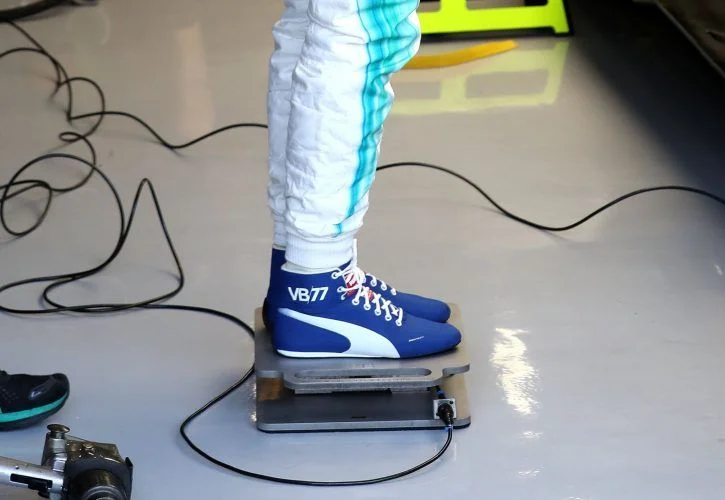
The average driver’s weight is 66.7 kg.
At 54 kg’s, Yuki Tsunoda is the lightest driver, while Alex Albon weighs 20 kg’s more at 74 kg’s.
The Truth About the Average F1 Driver Height and Weight – BMI
The average formula One driver’s BMI is 21.6 kg’s.
Esteban Ocon’s BMI is an impressive 19.1, while Lewis Hamilton has the highest BMI at 24.1.
Lewis Hamilton’s Height and Weight: How They Compare to Other F1 Drivers

Hamilton is 1.74 m tall, weighs 73 kg, and has a BMI of 24.1.
Lewis Hamilton is one of the shortest drivers on the grid, standing at 174 cm tall and weighing 73 kg. However, his height and weight do not seem to affect his performance, as he is also one of the most successful drivers in F1 history, with seven world championships and 101 race wins.
In fact, being shorter and lighter may give him an advantage over taller and heavier drivers, as he can fit more comfortably in the cockpit and reduce the overall weight of the car. However, being too light can also pose some challenges, such as maintaining muscle mass and hydration levels.
Lewis Hamilton is a seven times world champion proving that he has the ideal height and weight for an F1 driver – but does he? Max Verstappen has a completely different body composition and is potentially just as successful!
Average F1 Driver Height And Weight – Max Verstappen?
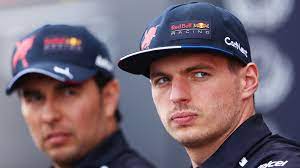
With a height of 1.81 m and a weight of 72 kg, Max Verstappen has a body mass index (BMI) of 22.0. He is the reigning F1 world champion, having won the title in a thrilling finale against Lewis Hamilton in 2022.
He is also one of the tallest and heaviest drivers on the grid, which may affect his car’s aerodynamics and balance. However, he compensates for this with his exceptional driving skills and aggressive racing style.
Despite this (or because of it) he is a standout driver who potentially threatens to break Lewis Hamilton and Michael Schumacher’s records
Short Stature, Big Talent: Meet the Five Compact Stars of F1 2023!
While most F1 drivers stand around the average height of 175 cm, some defy expectations with their smaller frames, proving that size doesn’t define skill. Among the 20 competitors this season, these five drivers pack a big punch in a compact package:
Yuki Tsunoda (AlphaTauri)
At just 159 cm and 54 kg, the youngest driver on the grid is a true pocket rocket. Despite his stature, he’s impressed in junior categories like Formula 2 and 3, and now shows immense potential with AlphaTauri. Keep an eye on this rising star!
Lando Norris (McLaren)
Don’t let his 170 cm and 68 kg fool you. Since joining McLaren in 2019, Lando has already secured four podiums and a pole position. With raw talent and podium finishes under his belt, he’s a contender to watch for future Grand Prix wins and even championships.
Fernando Alonso (Aston Martin)
This two-time world champion, returning to F1 after a two-year break, proves age is just a number. At 171 cm and 68 kg, his experience and skill are undeniable. His early 2023 success with Aston Martin silenced doubters, demonstrating that the “old man” still has the magic touch.
Sergio Perez (Red Bull)
Consistency and reliability are Sergio’s strengths. Since 2011, this 173 cm, 63 kg driver has racked up two race wins and four podiums. While 2023 wasn’t his strongest year, finishing second in the championship was largely due to his powerful Red Bull car. We expect him to refine his skills and push harder in 2024.
These drivers prove that driving prowess isn’t limited by height. They inspire us with their talent, dedication, and ability to overcome physical limitations. Who knows, maybe they’ll rewrite the rulebook and become the next champions of F1!
| Name | Height | kgs | BMI |
|---|---|---|---|
| Yuki Tsunoda | 1.59 | 54 | 21.4 |
| Nyck De Vries | 1.67 | 67 | 24.0 |
| Lando Norris | 1.70 | 68 | 23.5 |
| Fernando Alonso | 1.71 | 68 | 23.3 |
| Sergio Perez | 1.73 | 63 | 21.0 |
Heavier Weights, Different Races: Exploring the Impact of Size in F1 2023
In the high-speed world of Formula 1, every gram counts. While a driver’s weight isn’t the only factor, it can significantly impact car performance and driving style. While most aim for the minimum 80kg to avoid ballast, some naturally tip the scales higher. Let’s meet the heaviest contenders of the 2023 season and see how their size plays a role on the track:
1. Max Verstappen (Red Bull): Reigning champion Max Verstappen, at 181cm and 72kg, packs a punch. His height might affect aerodynamics, but his aggressive driving compensates.
2. Lewis Hamilton (Mercedes): Despite being on the shorter side (174cm), Hamilton’s muscular build brings him to 73kg. His strict fitness regime ensures optimal performance.
3. Nico Hulkenberg (Haas): Back in F1 after a year off, Hulkenberg’s experience (and 74kg at 184cm) are valuable assets. His height might require slight setup adjustments.
5. Alex Albon (Williams): The towering figure of Albon (186cm and 75kg) could present challenges. However, his podium finishes showcase his ability to adapt and excel.
Beyond the F1 Driver Height and Weight Numbers
While weight plays a role, it’s crucial to remember that it’s just one piece of the puzzle. Each driver’s physique, muscle distribution, and driving style create a unique blend of strengths and weaknesses. For example, Verstappen’s height might affect aerodynamics slightly, but his aggressive maneuvers more than compensate. Similarly, Hamilton’s muscular build might add weight, but his rigorous training ensures peak performance.
The beauty of F1 lies in its diverse lineup of drivers. From the compact agility of Yuki Tsunoda to the towering presence of Alex Albon, each athlete brings their own strengths and challenges to the grid. It’s not just about who weighs the least, but how they utilize their unique physicality to conquer the racetrack.
| Name | Height | kgs | BMI |
| Max Verstappen | 1.81 | 72 | 22.0 |
| Lewis Hamilton | 1.74 | 73 | 24.1 |
| Hulkenberg | 1.84 | 74 | 21.9 |
| Alex Albon | 1.86 | 74 | 21.4 |
Learn About Each F1 Driver And F1 Team
To find out more information on each F1 driver follow the links below.
F1 Driver Height and Weight – Conclusion
In conclusion, the average weight of F1 drivers is not as straightforward as you might think. While some drivers are lightweight, others have a more average build. Weight regulations in F1 have evolved over the years, and teams are constantly working to find ways to reduce the weight of their cars.
For drivers, weight can have a significant impact on their performance, but it is important to maintain a healthy balance between strength, endurance, and weight. By focusing on fitness, nutrition, and teamwork, F1 drivers can ensure that they are competitive on the track while also staying healthy and safe.


